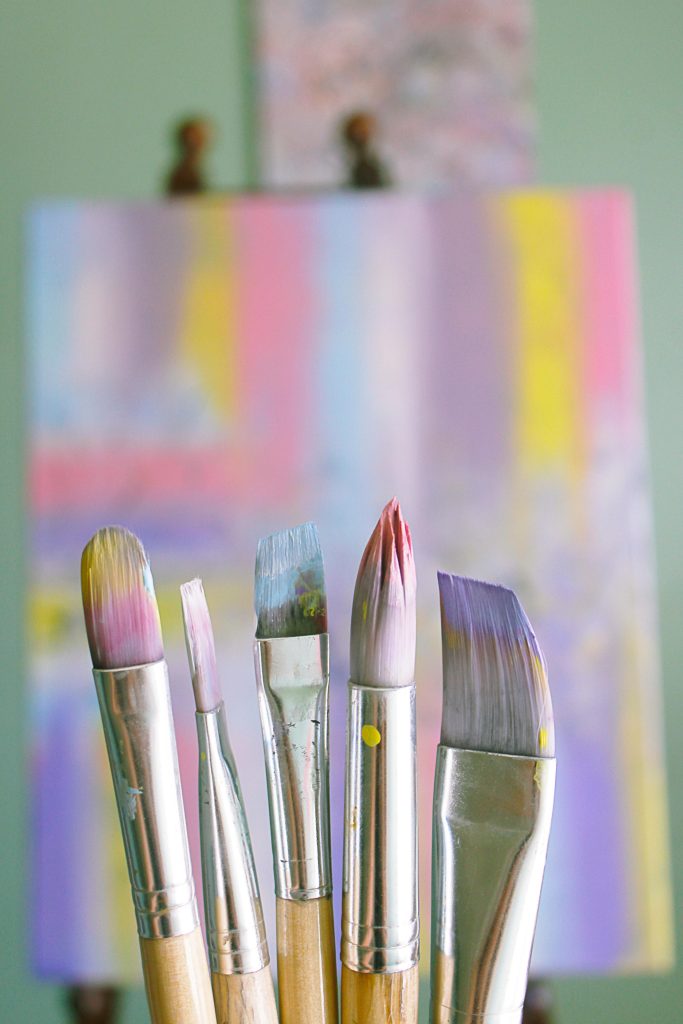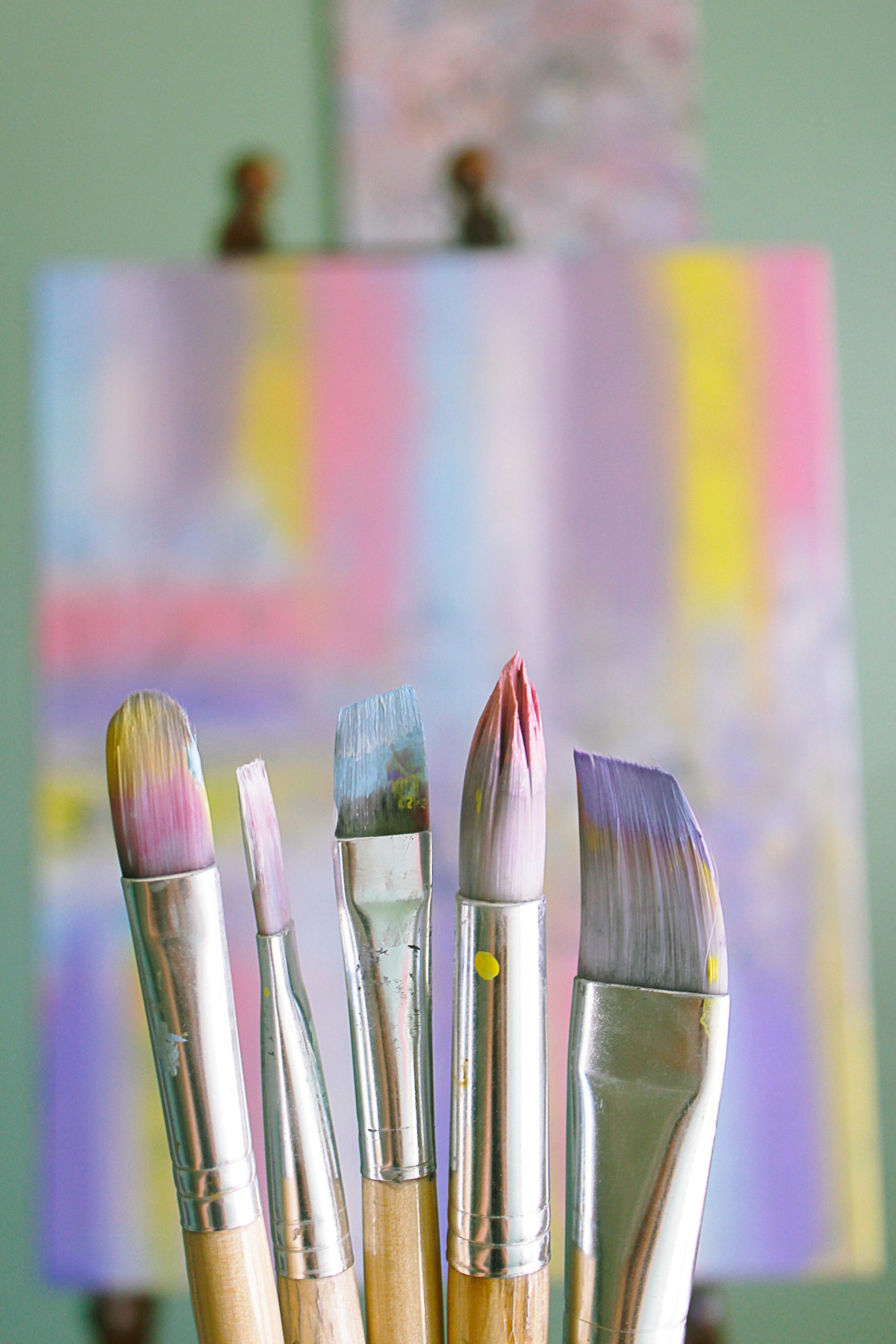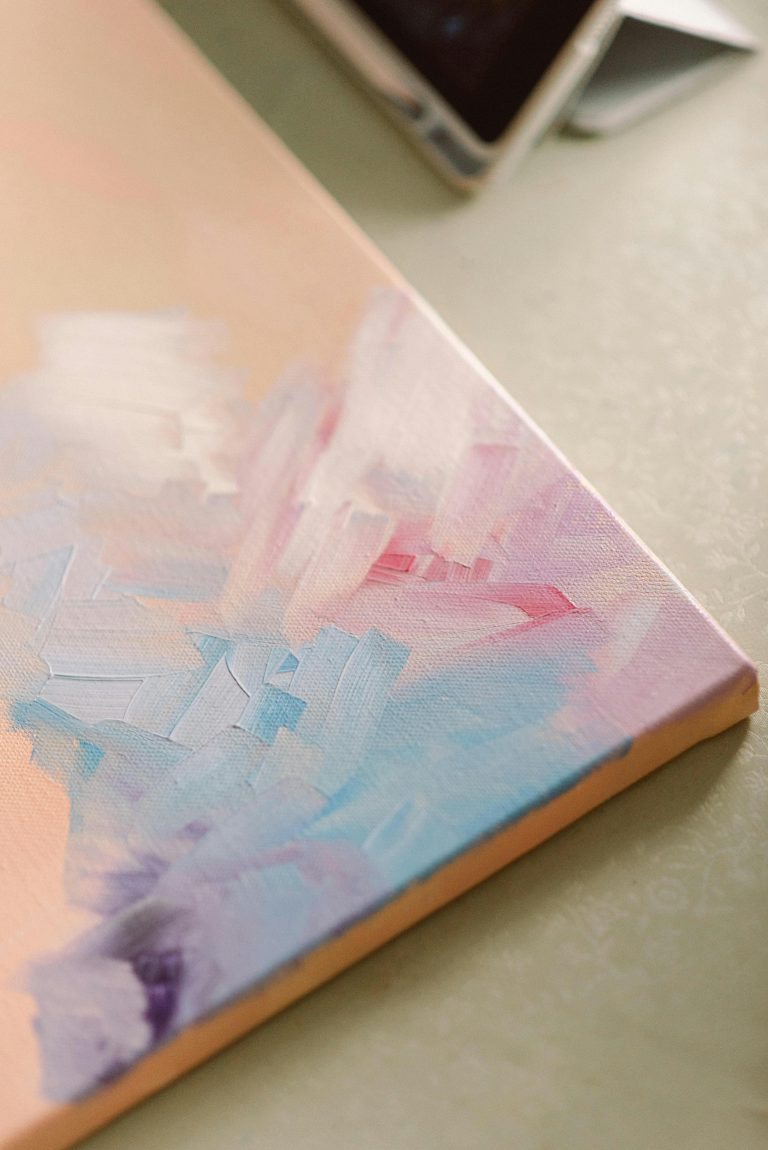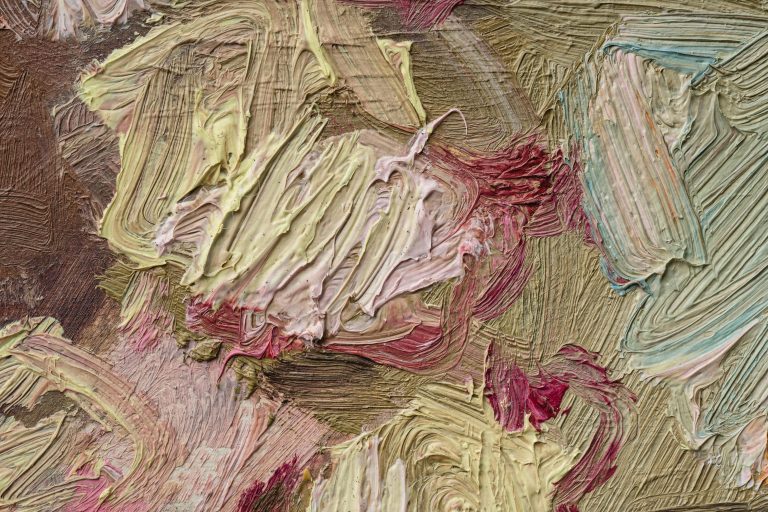Creating a Peaceful Painting Routine at Home : How small moments with a brush can bring calm to your daily life
A painting routine doesn’t have to look like a full art studio or hours of focused work. It can be five quiet minutes before bed. A slow Saturday afternoon with lo-fi music playing in the background. A few brushstrokes while your coffee cools. The beauty of painting isn’t just in the act of creating—it’s in the gentle space it creates around you. And building a routine with it can become one of the softest, most grounding parts of your day.
You don’t have to be an artist. You don’t have to show your work to anyone. You don’t even have to finish every piece. All you need is the willingness to slow down, be present, and let your mind rest in color.
Start With a Space, Not a Skill
Before anything else, find a small space that feels good to be in. It doesn’t need to be big or perfect. A corner of your desk, a seat by the window, even a section of your floor can work. Lay down an old towel or piece of cardboard, keep a jar of water nearby, and store your brushes and paints in a small container. That’s it. You’ve created your studio.
Having a designated spot helps your brain associate it with calm. Over time, just sitting in that space can start to ease tension—even before you begin painting.
Decide When Painting Feels Best for You
Everyone’s rhythm is different. Some people like to paint in the morning while the world is still quiet. Others enjoy painting at night to release the weight of the day. You don’t need to paint every single day. You just need to return to it regularly enough that it starts to feel familiar.
Even if you only paint once or twice a week, what matters is that it becomes yours. A space and a time that belongs just to you.
Don’t Paint to Be Productive—Paint to Feel
The moment painting becomes a chore, the peace disappears. Try not to approach your routine with the mindset of “I have to make something good.” Instead, let it be about curiosity. What happens when I mix these colors? What does my mood feel like today on canvas? What if I paint a shape over and over just because it calms me?
Let your painting routine be an emotional check-in, not a to-do list item. Some days, you may only paint a few lines. Other days, you may get completely lost in it. Both are valid. Both are part of the practice.
Use Music or Silence to Set the Mood
Sound can really shape how you experience painting. If your mind is racing, soft instrumental music can help guide you into a calmer state. On days when you’re overstimulated, silence might be better. Pay attention to what you need. The goal is to make your painting time feel like a little sanctuary—something you look forward to because it asks nothing from you except to be present.
You Don’t Need Rules to Make It Meaningful
There’s no one way to build a painting routine. You can use a sketchbook and watercolors, a canvas and acrylics, or even cheap paper and leftover supplies from a school project. What matters is consistency. A gentle, reliable rhythm that gives your nervous system a break from the noise of everyday life.
You’re allowed to paint with no end goal. You’re allowed to start and stop as much as you want. You’re allowed to make a mess. That’s the whole point—it’s a place where you don’t have to perform. You just show up.
Final Thoughts: Peace Lives in the Repetition
Creating a painting routine isn’t about becoming an artist. It’s about making space. Space to slow down. To explore your mood. To be with yourself in silence and color. Over time, the routine becomes something more than just painting—it becomes a quiet act of self-respect. A way of saying, “I deserve moments of peace, even on the busiest days.”
So light a candle. Open the window. Play your music. And pick up your brush. Your routine doesn’t have to be perfect. It just has to be yours.
For more ways to slow down and reset, keep coming back to SootheSync.







